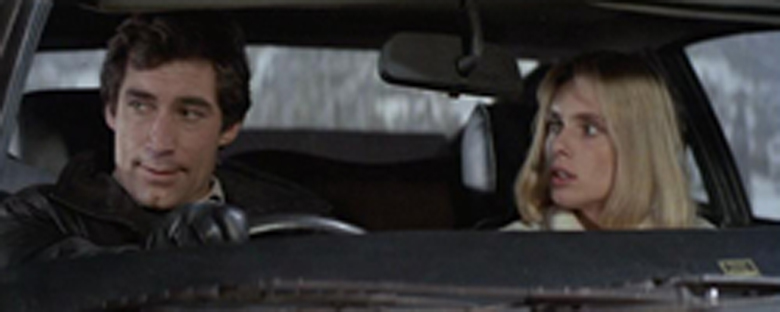Reviews
John Glen
UK / USA, 1987
Credits
Review by Rich Watts
Posted on 19 March 2005
Source MGM DVD
Related articles
Features: The Genealogy of James Bond
Following on from Roger Moore’s overlong tenure in the role of James Bond, and having had to hire an actor who was regarded well as a possible replacement but by no means the first choice as 007, the Bond series seriously falters with The Living Daylights, the 14th official film in the franchise.
After securing the defection of a KGB agent General Koskov, Bond learns of Koskov’s links with an American arms trader, Whitaker. Whilst Koskov implicates a Soviet leader’s involvement in a plot to dispose of British Secret Service agents, Bond not only has to try and figure out who is on who’s side but what to do in order to stop Koskov and his accomplices securing an arms trade worth hundreds of millions of dollars.
Responsibility for this jejune offering is shared amongst the various aspects of the filmmaking process: indifferent direction, bland cinematography and a shyly developed script contribute to the inanity behind the camera, whilst in front poor villains and a slight Bond girl should all take their share of the blame. Singled out for criticism, however, are director John Glen and the new Bond himself, Timothy Dalton, both of whom are at most fault.
Under Glen’s direction, which started with For Your Eyes Only in 1981, the tepidness of the Bond format began to take its toll. Perhaps the result of his long involvement with the Bond series stretching back to his second unit direction and editing of On Her Majesty’s Secret Service in 1969, Glen’s five Bond movies revealed a notable lack of ideas, with one foot planted firmly in the real (and therefore arguably boring) world. As an example, the villains of The Living Daylights will suffice: neither Koskov or Whitaker are exaggerated psychopaths bent on world domination/destruction, but instead large-scale dealers wanting to get rich quick through some arms- and drug-trading. Where, the viewer might ask, is the long-haired Persian cat?
Dalton’s first outing as Bond can be seen as a brave experiment in character development that fails. He presents a Bond unfamiliar to the viewer: we have a conflicted, all too human man far more sensible in his approach to work than any Bond before him. This James Bond is one full of inconsistency: he has a harder edge—demonstrated by his turn as a cold-blooded assassin on several occasions—that turns to soft-heartedness—as exemplified by letting his “love interest” fetch her cello at an inopportune moment. Bond is as stern as he is flexible, whilst demonstrating far less humour than an audience is accustomed to. Flippancy has gone and in its place remains a no-frills requirement to get the job done. Though this seems a reasonable direction to take the character of Bond—more in tune, certainly, with the Bond of Ian Fleming’s books—it isn’t what an audience expects. Indeed, this new Bond is summarised by his own words, commenting on a parcel carried by Koskov during his escape attempt: “That’s not a human heart; that’s an animal’s heart.” The feeling of Bond, and thus his appeal, has been replaced with something far less charming.
Dalton would resume his role as Bond only once more, in 1989’s Licence To Kill. Following that film, the James Bond series would linger in the doldrums for six years until Pierce Brosnan—the preferred and original choice for 007 in The Living Daylights—could take up the role and help re-establish the svelte, debonair characteristics of Bond whilst the film-makers upped the explosives quota around him. Whilst not the worst film in the Bond series, The Living Daylights was an unfortunate episode appearing towards the end of the franchise’s weakest period.
We don’t do comments anymore, but you may contact us here or find us on Twitter or Facebook.



